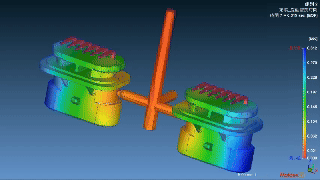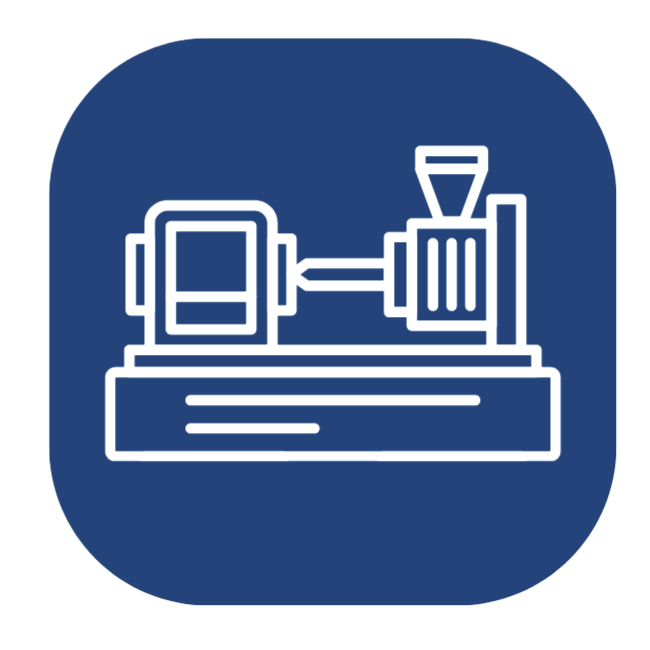Layana provides robust and durable two-shot injection molding technology for the production of home appliances and automotive parts, offering single-piece injection molding and multi-material solutions. Ensuring excellent durability and design flexibility, it drives efficient production in the industry.
Two-shot injection molding, also known as dual-material injection molding or multi-shot molding, is one of the common plastic injection molding techniques. Two-shot injection molding is somewhat similar to overmolding, and in some regions, overmolding is referred to as multi-shot molding. For example, in the processing area of central Taiwan, plastic injection molding processes are categorized into three main types based on whether different materials are combined and whether there is a secondary injection process: plastic injection molding, two-shot injection molding, and insert molding. This article will only discuss two-shot injection molding.
Introduction to Two-Shot Injection Molding
|
|
The two-shot injection molding process involves continuously injecting the same or two different plastic materials into two sets of molds to form plastic products. Products produced by the two-shot injection molding process can combine the properties of two materials, such as different rigidity, flexibility, wear resistance, and flame retardancy. The machines typically used for two-shot injection molding are horizontal machines, and the process is completed using either a two-shot injection molding machine or two horizontal injection molding machines. The following video introduces the two-shot injection molding process using a two-shot injection molding machine. |
Taking Layana as an example, the process of achieving two-shot injection molding is as follows:
- Provide Design for Manufacturability (DFM): Conduct feasibility assessments based on the customer's engineering drawings, including mold flow analysis, cost estimation, etc., to recommend product designs that can be mass-produced.
- Mold Design: After price confirmation and receipt of the customer's order, begin designing the injection molds. If there are special requirements, an isolation or movable structure can be designed.
- Machine Equipment Debugging: After the injection molds have been assembled, conduct trial molding and set the plastic injection parameters to ensure smooth production before mass production.
- First Injection: During the mass production process, perform the first injection to form the product base.
- Second Injection: After the first and second mold sets are repositioned on the machine, overmold the second material onto the base.
- Cooling and Ejection: Wait for the product to cool completely before ejecting the finished product.
|
|
 |
Layana's Two-Shot Injection Molding Capabilities
Layana has introduced dual-compound barrel assemblies, facilitating smoother mass production of plastic injection molding. From designing precision injection molds, mold subcontracting and production, injection molding to product assembly, Layana provides customers with the highest quality service. Two-shot injection molded parts are suitable for medical devices, automotive precision components, electronic components, connector parts, sensor system parts, and more.
 |
| Item/Type | Vertical Injection Machinery | Horizontal Injection Machinery |
|---|---|---|
| Tonnage Range | From 35T to 250T | From 60T to 200T |
|
Maximum Product Size |
INCH: 8.5 x 11 x 6 MILLMETER: 216 x 279 x 150 |
|
|
Maximum Product Weight |
0.1g~500g | |
| Preciseness |
Mold: ± 0.005mm Product: ± 0.03~0.05mm |
|
Advantages of Layana's Two-Shot Injection Molding
Two-shot injection molding not only allows the production of plastic parts using the same plastic material but also enables the use of different plastic materials, such as soft and hard materials, for two-shot injection molding. Overall, two-shot injection molding offers the following advantages:
- Monolithic Molding: Reduces the number of assembled parts, lowering production costs and time.
- Material Diversity: Combines different materials based on the plastic raw material property table, resulting in superior product performance.
- Structural Integrity: The tight integration of two materials enhances product durability.
- Design Innovation: Enables the production of products with complex appearances in various colors and materials.
Application Areas of Layana's Two-Shot Injection Molding
The excellent performance and design flexibility of two-shot injection molding make it widely applicable in numerous fields. The applications of two-shot injection molding include but are not limited to:
- Electronic Product Enclosures: Impact-resistant hard outer shells with soft protective edges
- Automotive Interior Parts: Hard plastic bases with soft surface components
- Medical Devices: Rigid frames with biocompatible soft contact surfaces
- Household Product Handles: Hard grips combined perfectly with soft, non-slip materials
In-depth Comparison of Two-Shot Injection Molding and Overmolding Processes
Apart from the basic differences mentioned above, two-shot injection molding and overmolding are very similar plastic injection molding processes, both involving two or more materials or colors of plastic being injection molded twice or more. However, due to differences in their molding processes, there are still some differences in mold design, molding process, and product production characteristics.
| Comparison Item |
Two-Shot Injection Molding | Overmolding |
|---|---|---|
|
Mold Design |
|
|
|
Molding Process |
|
|
|
Product Characteristics |
|
|




